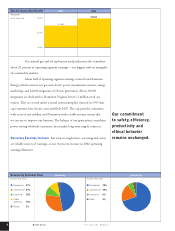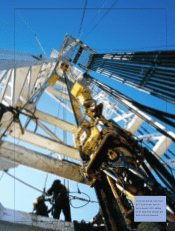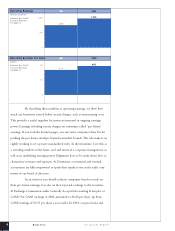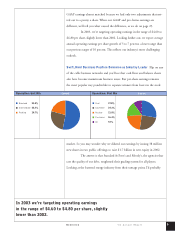Dominion Power 2002 Annual Report Download - page 15
Download and view the complete annual report
Please find page 15 of the 2002 Dominion Power annual report below. You can navigate through the pages in the report by either clicking on the pages listed below, or by using the keyword search tool below to find specific information within the annual report.
The 515-megawatt State
Line Power Station joined
our merchant fleet of
generators beyond Virginia
in 2002. It serves
Commonwealth Edison of
Chicago through 2012.
We made environmental
upgrades at our
Chesterfield Power Station
near Richmond.
13
Dominion ’02 Annual Report
Our “merchant fleet” of generators beyond Virginia welcomed a
top-flight Midwestern coal station last year. Merchant plants typically sell into
spot markets or are under contract to large customers or utilities. We bought
the 515-megawatt State Line Power Station near the Illinois/Indiana border for
about $185 million, boosting the output of our existing merchant fleet to nearly
6,000 megawatts. Along with the plant, we got a contract to supply power to
Commonwealth Edison of Chicago through 2012.
Construction was completed on three natural gas-fired merchant gen-
erators in 2002 in Pennsylvania, Ohio and West Virginia. Unfortunately, they
entered markets that softened substantially after construction started and aren’t
currently producing the returns we’d initially hoped for. As a result, we’ve eased
up on the accelerator, slowed our construction on other units and cut $2 billion
from our original spending plan and budget through 2005.
Building Smart for the Long Haul The problem the energy industry faces
is this: Power generation is essentially a long-haul business seeking to attract
long-haul investors. But the markets for power constantly change. To build big
























